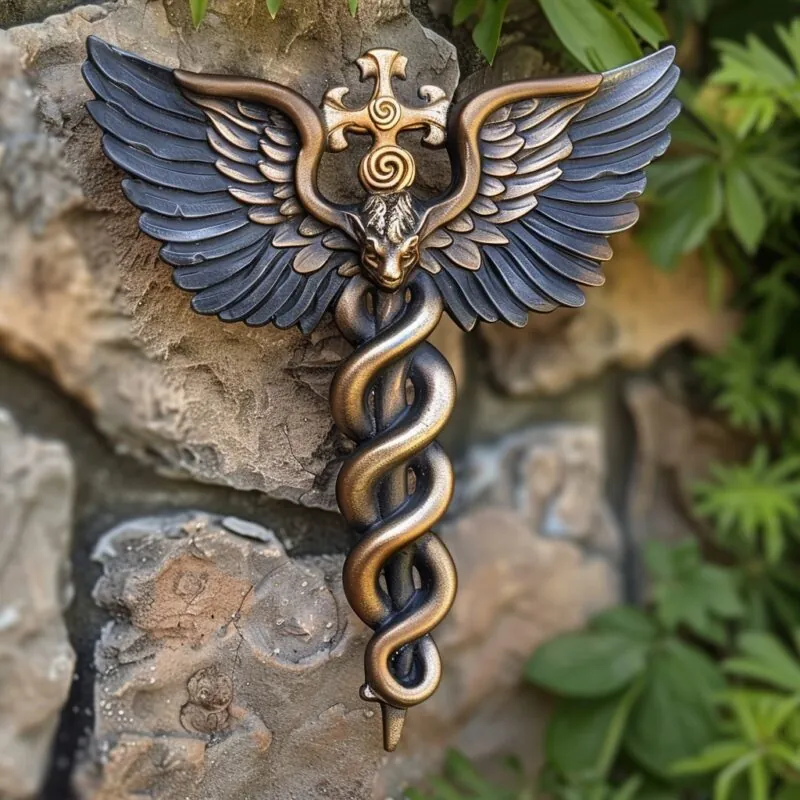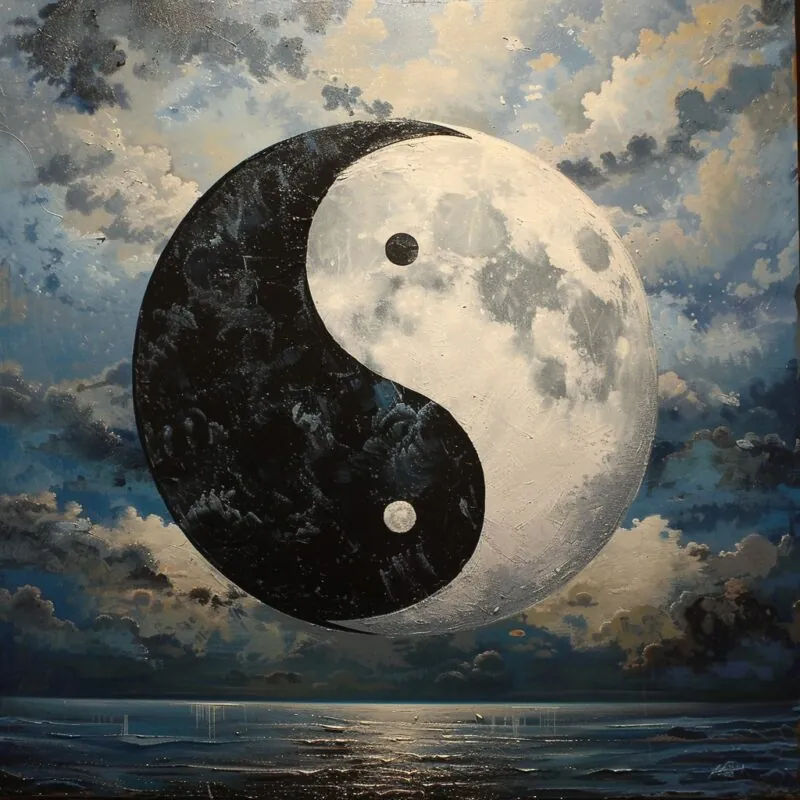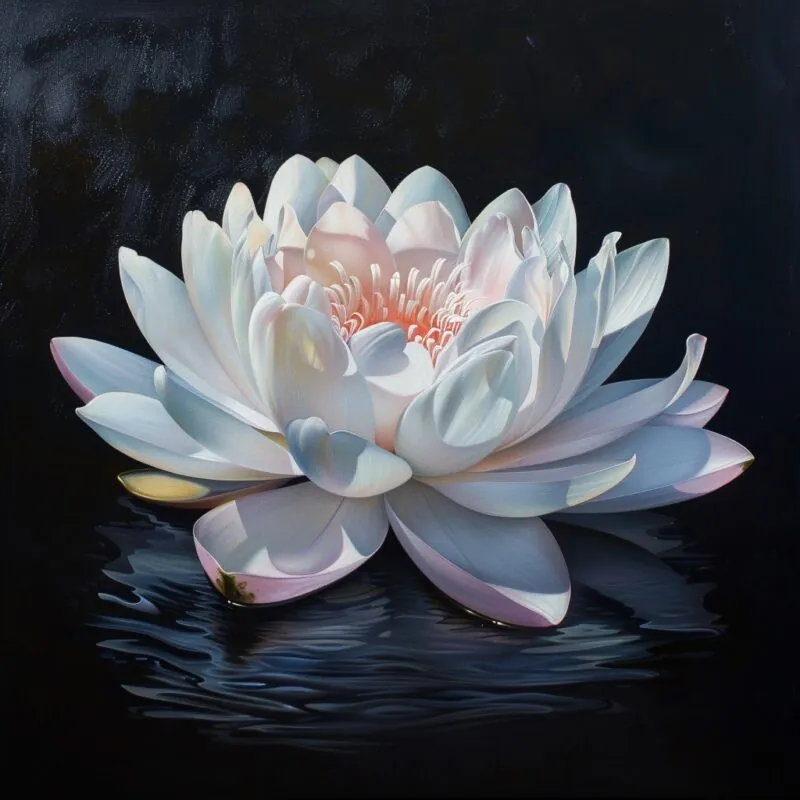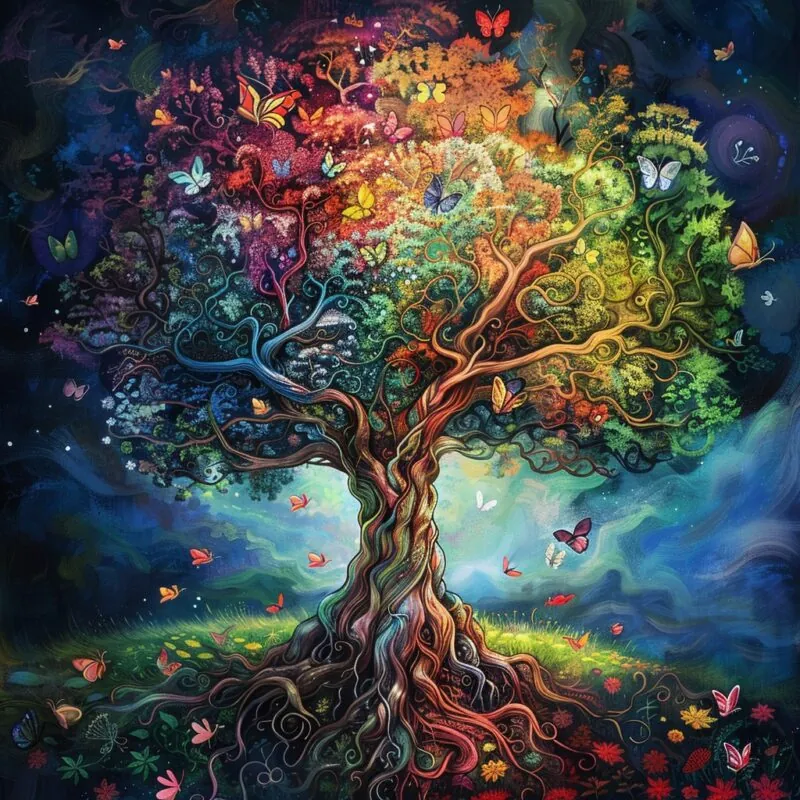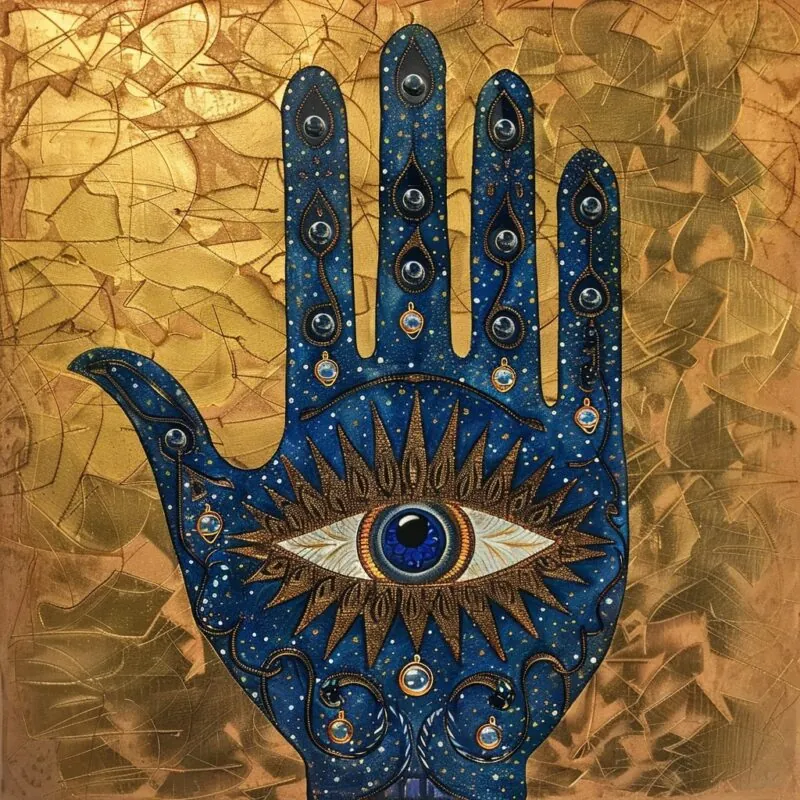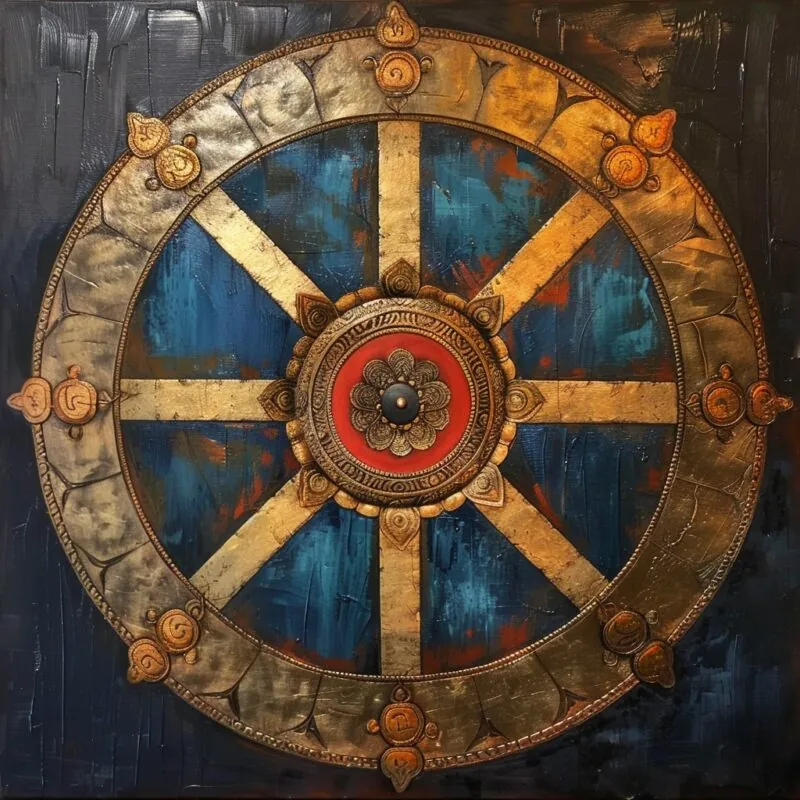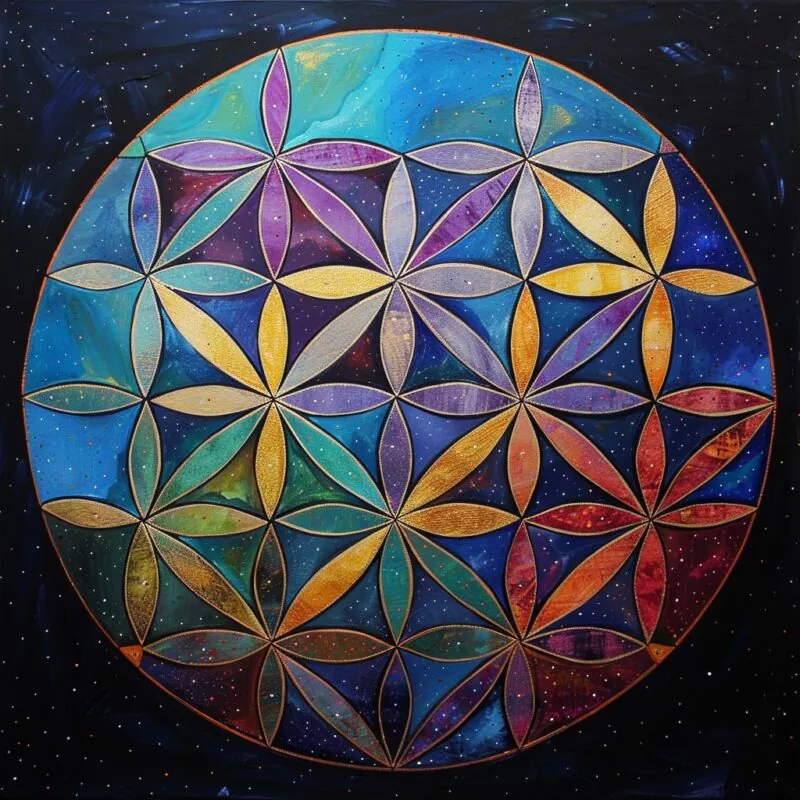Healing Symbols have long been integral to ancient wellness practices passed down through generations. As someone fascinated by the intersection of history, culture, and holistic health, I’ve always been intrigued by these time-honored icons. From the caduceus of Greek medicine to the serene lotus of Eastern traditions, these archetypal images speak to our universal need for balance and harmony.
My research reveals that these symbols, rooted in rituals of civilizations worldwide, are still used today for physical, mental, and spiritual well-being. Each emblem carries unique meanings and intentions, helping practitioners restore balance in their lives.
Understanding the origins of these symbols illuminates their significance and application, revealing how our ancestors treated themselves. Wellness routines are essentially modern adaptations of ancient healing practices.
10. Caduceus
The Caduceus was adopted by the U.S. Army Medical Corps in 1902, causing widespread confusion with the Rod of Asclepius.
The Caduceus, featuring two snakes entwined around a winged staff, is one of the most recognized symbols of healing. Originating from Greek mythology, it is associated with Hermes, the messenger god.
The intertwined snakes symbolize balance and harmony, while the wings represent swiftness. Despite its occasional association with commerce, the Caduceus remains prominent in the medical field, symbolizing the balance necessary for effective healing.
Did you know that the wings on the Caduceus represent the Greek god Hermes’s ability to move freely between the mortal and divine worlds.
9. Rod of Asclepius
In ancient times, priests at the Asklepion would use non-venomous snakes in their healing rituals, letting them roam free among the patients.
Often confused with the Caduceus, the Rod of Asclepius features a single serpent coiled around a staff. This symbol is directly linked to Asclepius, the Greek god of medicine and healing. The serpent represents rebirth and rejuvenation, while the staff symbolizes healing power.
The Rod of Asclepius is widely used in medical contexts, particularly in Europe and by the World Health Organization, reflecting its strong historical roots in health and medicine.
Did you know that the Rod of Asclepius appears on the logo of the American Medical Association, emphasizing its connection to health care.
8. Om
The sound “Om” is considered the most sacred mantra in Hinduism, often used at the beginning and end of prayers and meditation sessions.
The Om symbol, consisting of three curves, a semicircle, and a dot, represents the states of consciousness: waking, dreaming, and deep sleep, as well as transcendence. This sacred symbol in Hinduism, Buddhism, and Jainism embodies the essence of the universe.
Chanting “Om” is believed to resonate with the universe’s natural frequency, promoting relaxation and spiritual awareness. It is commonly used in meditation, yoga, and healing practices to enhance mental and spiritual well-being.
Did you know that NASA recorded the sound of the sun and found it resonates at a frequency similar to the Om chant?
7. Yin Yang
The concept of Yin and Yang is used in traditional Chinese medicine to diagnose and treat illnesses by balancing the body’s energies.
The Yin Yang symbol, with its black and white interlocking shapes, represents balance and harmony. Yin is associated with darkness and passivity, while Yang represents light and activity.
This symbol highlights the interdependence of opposite forces, each containing a seed of the other. Used in traditional Chinese medicine, the Yin Yang symbol promotes the idea that balance within the body and mind is crucial for overall health and healing.
Did you know that the Yin Yang symbol was first described in the “I Ching,” an ancient Chinese text used for divination?
6. Lotus
Lotus flowers can live for over a thousand years, and their seeds can germinate after being dormant for centuries.
The Lotus flower, emerging clean from muddy waters, symbolizes purity, enlightenment, and rebirth. In Buddhist and Hindu traditions, the Lotus is associated with spiritual awakening and the journey toward enlightenment.
The flower’s gradual unfolding of petals represents the steady progress of spiritual growth. In Ayurveda, different parts of the Lotus are used for medicinal purposes, reflecting its significance in healing and transformation.
Did you know that the flower is often used in traditional Chinese medicine to treat various ailments, from fever to bleeding disorders.?
5. Tree of Life
The Tree of Life symbol appears in Norse mythology as Yggdrasil, a giant ash tree that connects the nine worlds.
The Tree of Life, depicted as a large tree with deep roots and expansive branches, symbolizes growth, strength, and interconnectedness. This ancient symbol connects the earth with the heavens, representing the unity of all life.
It is a prominent motif in various cultures, signifying fertility, regeneration, and the cycle of life. The Tree of Life encourages balance and harmony within the body, mind, and spirit, making it a powerful symbol of holistic healing.
In Celtic culture, the Tree of Life represents the connection between the earth and the sky, as well as the link between ancestors and descendants.
4. Hamsa
The Hamsa symbol predates both Judaism and Islam, with roots in ancient Mesopotamia.
The Hamsa, a hand-shaped amulet with an eye in the center, is a symbol of protection and healing in Jewish and Muslim cultures. Known as the Hand of Miriam in Judaism and the Hand of Fatima in Islam, it is believed to ward off the evil eye and negative energies.
The Hamsa is often worn as jewelry or displayed in homes to promote health, luck, and blessing. Its protective nature and intricate designs make it a revered symbol of healing and spiritual well-being.
It’s often depicted with an eye in the center, known as the “evil eye,” which is believed to offer protection against negative energy.
3. Dharma Wheel
The Dharma Wheel, or “Dharmachakra,” is one of the oldest symbols of Buddhism, dating back to the time of Buddha.
The Dharma Wheel, with its eight spokes, represents the Noble Eightfold Path in Buddhism. Each spoke corresponds to an essential aspect of the path to enlightenment: right understanding, intention, speech, action, livelihood, effort, mindfulness, and concentration.
The wheel’s circular shape signifies the cyclical nature of life and the continuous journey toward spiritual growth and healing. It is a key symbol in Buddhist practice, aiding in meditation and mindfulness.
It is often depicted in Buddhist art alongside the lotus flower and the Buddha himself.
2. Flower of Life
The Flower of Life pattern has been found in ancient Egyptian temples, including the Osirion in Abydos.
The Flower of Life is a geometric pattern composed of overlapping circles, forming a flower-like design. This symbol, found in ancient cultures like Egypt and China, represents unity, interconnectedness, and the geometric foundations of the universe.
It is used in meditation and energy healing to promote balance and harmony. The Flower of Life is also a popular motif in art and architecture, reflecting its universal significance and aesthetic appeal.
It is believed that Leonardo da Vinci studied the Flower of Life’s form and mathematical properties, using it in his own work.
1. Reiki Symbols
The founder of Reiki, Mikao Usui, discovered the symbols after a 21-day fasting meditation on Mount Kurama in Japan.
Reiki symbols are integral to the practice of Reiki, a Japanese energy healing technique. These symbols, each representing different energy frequencies, are used to focus and direct healing energy. Key Reiki symbols include Cho Ku Rei (power), Sei He Ki (emotional healing), and Hon Sha Ze Sho Nen (distance healing).
Reiki practitioners visualize or draw these symbols during sessions to enhance the flow of healing energy, promoting physical, emotional, and spiritual well-being.
- Reiki symbols are considered sacred and are traditionally kept confidential until a student reaches a certain level of training.
Conclusion
Healing symbols have stood the test of time, their significance enduring across cultures and continents. The Caduceus, with its intertwined serpents, or the serene lotus flower – these icons embody a deeper meaning, speaking to our innate longing for balance and wellbeing. By weaving these ancient archetypes into our modern rituals, whether through meditation, art, or daily practice, we can draw upon centuries of collective wisdom. T
hese symbols transcend mere aesthetics, encapsulating profound truths about the interconnectedness of our physical, mental, and spiritual selves. Integrating them into our lives can help us cultivate the equilibrium needed to thrive holistically.


